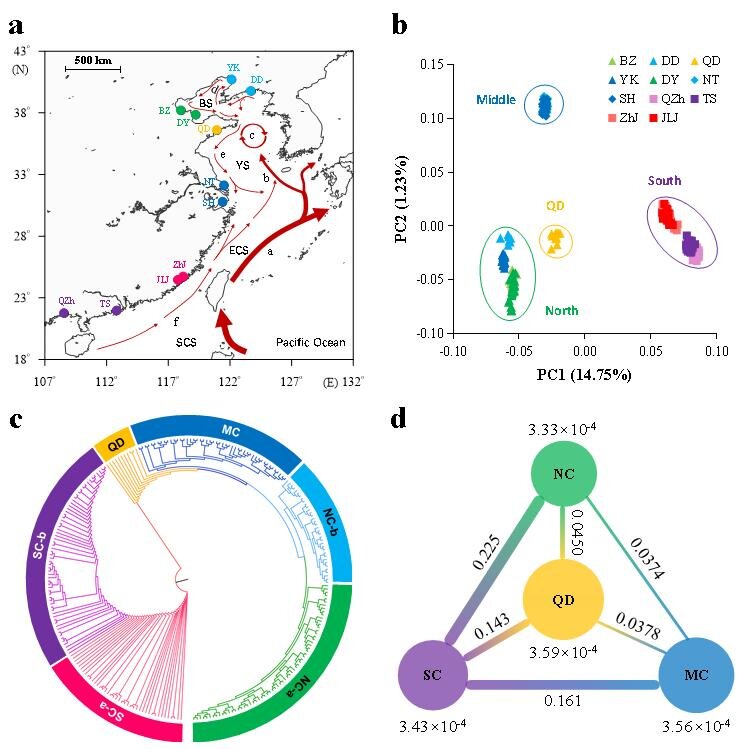#Researchers reveal evolutionary mechanisms of environmental adaptation in estuarine oysters

“#Researchers reveal evolutionary mechanisms of environmental adaptation in estuarine oysters”

A research team led by Prof. Zhang Guofan and Prof. Li Li from the Institute of Oceanology of the Chinese Academy of Sciences (IOCAS) has revealed evolutionary mechanisms of environmental adaptation in estuarine oysters.
The study, published in Communications Biology, provided insights into the effects of climate change on genetic structure of oysters’ resources and the role of plasticity in adaptive evolution.
The estuarine oysters, Crassostrea ariakensis, are keystone species in coastal and estuarine ecology, providing critical ecological services as filter-feeders and habitat engineers.
However, resources of wild estuarine oysters are sharply reduced due to habitat destruction, overfishing, land-based pollution and decrease in surface runoff. Thus, it’s urgent to conduct wild resource repair and artificial breeding of estuarine oysters.
To explore population structure and adaptive mechanisms to temperature and salinity, the researchers constructed a chromosomal-level genome assembly for estuarine oysters, which is the most contiguous assembly produced with nanopore long-read sequencing for a bivalve mollusk.
The whole-genome resequencing data revealed the population structure including northern China, middle China and southern China populations. Environmental gradients in temperature and salinity, directions of ocean currents, historical glaciation and geological events contributed to the formation of this population structure.
Selective sweep analysis identified 51 genes under selection and most of them were responsive to temperature and salinity changes.
Moreover, environmental responsive genes with high plasticity exhibited higher genetic divergence at upstream noncoding regulatory regions, which is consistent with previous study that noncoding variations promote adaptive divergence between two sister oyster species.
These findings can further facilitate the demarcation of genetic units, assessment of germplasm resources and utilization of excellent genetic variations.
Are domesticated oysters less prepared for climate change?
Ao Li et al, Genome of the estuarine oyster provides insights into climate impact and adaptive plasticity, Communications Biology (2021). DOI: 10.1038/s42003-021-02823-6
Citation:
Researchers reveal evolutionary mechanisms of environmental adaptation in estuarine oysters (2021, December 29)
retrieved 29 December 2021
from https://phys.org/news/2021-12-reveal-evolutionary-mechanisms-environmental-estuarine.html
This document is subject to copyright. Apart from any fair dealing for the purpose of private study or research, no
part may be reproduced without the written permission. The content is provided for information purposes only.
If you liked the article, do not forget to share it with your friends. Follow us on Google News too, click on the star and choose us from your favorites.
For forums sites go to Forum.BuradaBiliyorum.Com
If you want to read more Like this articles, you can visit our Science category.



